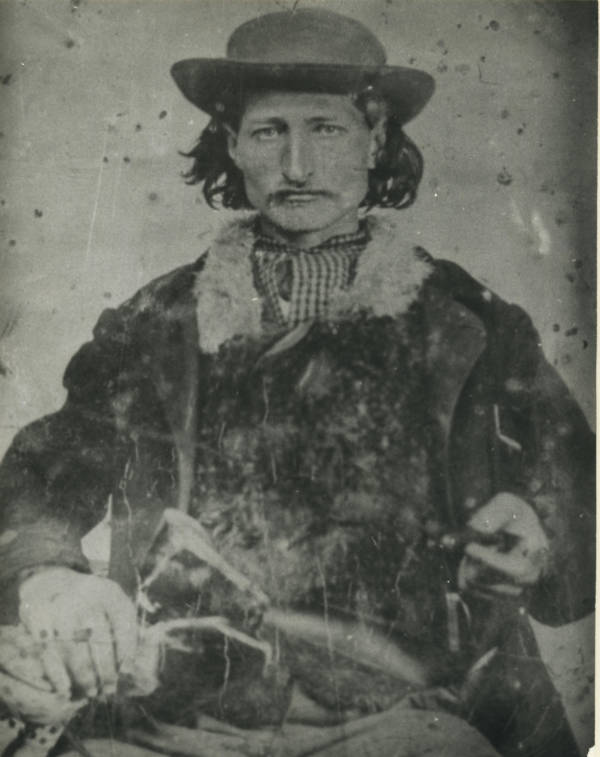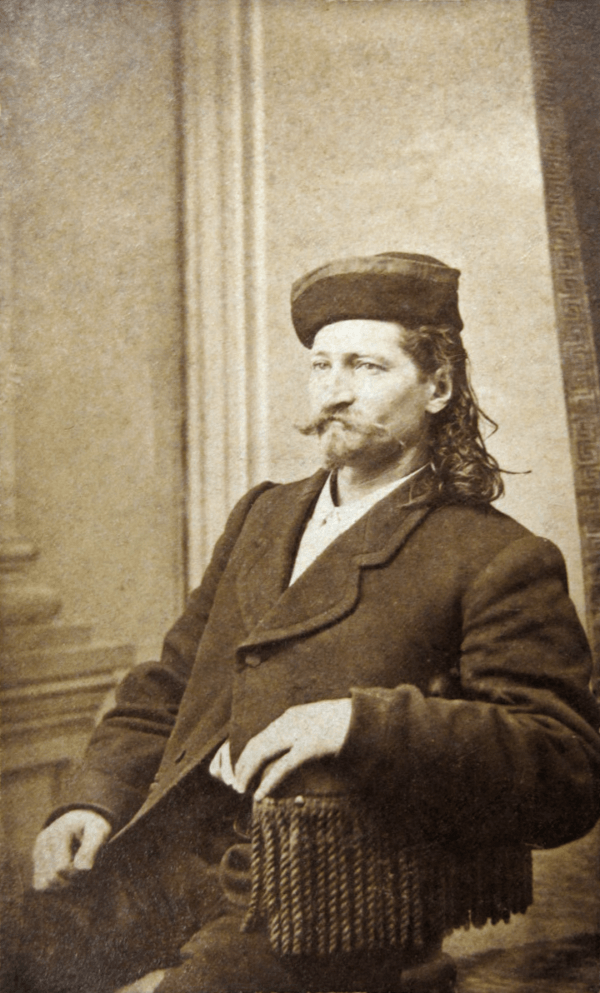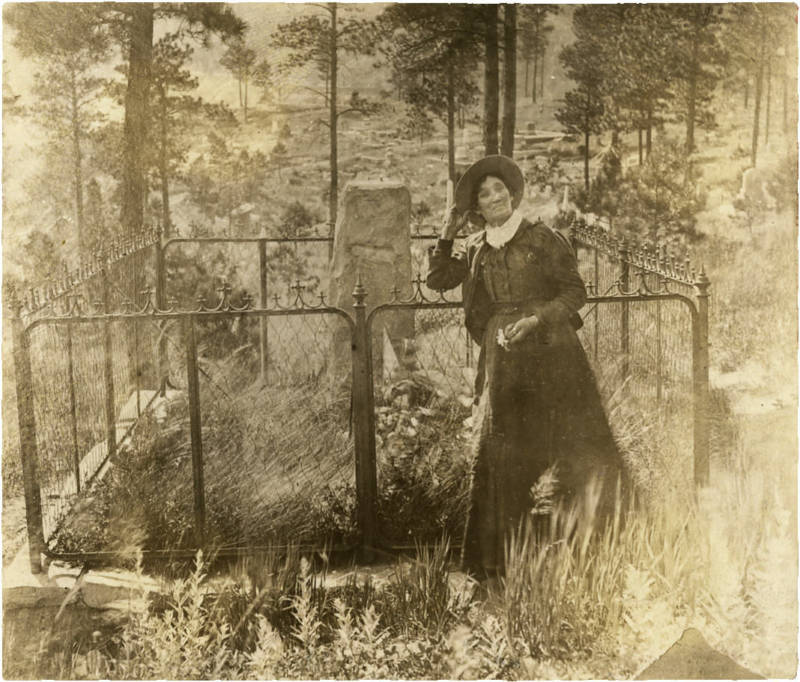Wild Bill Hickok: He Claimed He Killed 100s, But His Fatalities Were Closer To 10

Wild Bill Hickok.
In the Wild West, the only thing more degenerate than a gunslinger was the lies they spun, and nobody spun bigger lies than Wild Bill Hickok. He’s lay claim to the deaths of hundreds of men – but the facts behind the legend tell a different story.
Indeed, the legend of Wild Bill is just that — legend, folklore — and it all started with an 1867 issue of Harper’s Weekly:
“Wild Bill with his own hands has killed hundreds of men,” the article read. “Of that I have not a doubt. He shoots to kill.”
The article turned Wild Bill into a household name and he became a symbol of the Wild West; a man so feared that people shook when he came into town. There was just one problem — Wild Bill was not as fearsome as many believed.
Young James Hickok

James “Wild Bill” Hickok before he became a gunslinger, circa 1860.
James Butler Hickok was born on May 27, 1837, in Troy Grove, Ill. His parents, William Alonzo and Polly Butler Hickok, were Quaker-based abolitionists. His father participated in the Underground Railroad and used his family’s home as a station stop. His father died when Hickok was just 15, and to provide for his large family the teenager hunted. He was a meticulous shot and developed a reputation even as an early teen.
It’s believed that because of his pacifist roots, and his quick hand on the pistol, Hickok was able to mold himself into a sort of defender of the bullied, a champion of the oppressed.
At 18, Hickok left home for Kansas territory where he joined up with a group of anti-slavery vigilantes known as “Jayhawkers”, and it’s believed that here Hickok met 12-year-old William Cody who later become the infamous Buffalo Bill. As a member, Hickok became a bodyguard for General James Henry Lane, a senator from Kansas and also a leader of the abolitionist militia.
When the Civil War broke out, Hickok eventually joined up with the Union and acted as a teamster and spy, but not before he could be mauled by a bear while on a hunting expedition and forced to sit some of the conflict out.
While healing, Hickok was employed briefly with the Pony Express and cared for the stock at a facility in Rock Creek Nebraska. It was here, in 1861, where the legend of Wild Bill Hickok took off.
Notorious bully David McCanles had demanded funds from the station manager that he simply did not have. It’s rumored that at some point in the confrontation, McCanles referred to Hickok as “Duck Bill” because of his pointy nose and protruding lips.
The argument escalated into violence, shots were fired, and at the end, McCanles and two of his men lay dead. Hickok was brought to trial but quickly acquitted of all charges. Shortly after, “Wild Bill Hickok” was born.
The Birth of Wild Bill Hickok

An illustration from the Harper’s article that made Wild Bill a household name. February, 1867.
To the people of Rock Creek, Nebraska, there was no Wild Bill but rather a soft-voiced, sweet boy named James Hickok. It’s believed that David McCanles was the first man Wild Bill had killed and it had been in self-defense. Wild Bill even felt so awful about the affair that he gave every penny he had on him to McCanles’s widow after apologizing profusely.
But the Hickok Rock Creek thought they knew was dead and his stead there became, as one of his neighbors put it, “a drunken, swaggering fellow, who delighted when ‘on a spree’ to frighten nervous men and timid women.”
Wild Bill served his time alongside the Jayhawkers in the Union army until the war ended, at which point, the restless marksman picked up a nasty habit for gambling — and one that landed him in a duel at the center of town in Springfield, Mo. Wild Bill had gotten mad at a man named Davis Tutt for flaunting the gold watch he’d won off of him in a game of cards and challenged him to what is believed to be history’s first quick-draw duel.
The marksman, a deadly shot, had killed again.
When the reporters came rolling into town, though, Wild Bill resolved to make a new identity for himself as the toughest gunfighter in the Wild West.
A man named George Ward Nichols had caught wind of the quick-draw duel and its fast-fingered champion and so resolved to interview the legend in Springfield. Wild Bill had just been set free by a jury of his peers after the Missouri town ruled the duel “a fair fight”.
Nichols wasn’t planning on writing anything more than a short piece on a strange jury ruling, but as he sat down with Wild Bill and listened to him spin his stories, killings of tens he became enthralled. Wild Bill, he knew, was going to be a sensation — regardless of fact or fiction.
Indeed, when the article came out, the people of Rock Creek were shocked. “The first article in Harper for February,” one frontier paper read after the article was published, “should have had its place in the ‘Editor’s Drawer,’ with the other fabricated more or less funnyisms.”
Sheriff of Ellis County

A cabinet card of Wild Bill. 1873.
After the duel with Tutt, Hickok met up with his friend Buffalo Bill on tour with General William Tecumseh Sherman. He became a guide for General Hancock’s 1867 campaign against the Cheyenne, and while there, he met Lt. Colonel George Armstrong Custer, who described Hickok reverently as “one of the most perfect types of physical manhood that I ever saw.”
For a time Wild Bill Hickok and Buffalo Bill put on outdoor gunslinging demonstrations that featured Native Americans, buffalos, and sometimes monkeys. The shows were ultimately a failure, but they helped to contribute to Wild Bill’s growing reputation.
Ever-traveling, Wild Bill made his way to Hays, Kan. where he was elected county sheriff of Ellis County. But Wild Bill killed two men within his first month alone as sheriff. The first, town drunk Bill Mulvey, caused a raucous about Wild Bill’s move to the County. Wild Bill consequently shot a bullet into the back of his brain.
A second man was gunned down by the quick-handed sheriff for talking trash, too. It’s said that in his ten months as sheriff, Wild Bill killed four people before he was finally asked to leave.
Wild Bill Hickok In Abilene

John Wesley Hardin.
Wild Bill fired his gun in anger for the last time in Abilene, Kan., while serving as the town’s Marshal. Abilene had a reputation as a, particularly tough town and the town had a legendary gunfighter of its own already, one John Wesley Hardin.
Local saloon owner, Phil Coe, had upset the town by drawing a bull with a massive, erect penis on the wall of his saloon. Wild Bill made him take it down, and Coe swore revenge. Coe and his friends tried to hire Hardin to take out Wild Bill, but he wasn’t too interested.
Hardin went along with the scheme though long enough to pull a gun on Wild Bill. He made a commotion in the middle of town and, when Wild Bill came along and told him to hand over his pistols, Hardin pretended to surrender and instead, got Wild Bill at gunpoint.
Wild Bill, though, just laughed. “You are the gamest and quickest boy I ever saw,” he told Hardin and invited him out for a drink. Hardin was charmed. Instead of killing him, he ended up his friend.
The Last Bullet

Wild Bill. Circa 1868-1870.
Coe had no choice but to take Wild Bill out on his own, then. Coe put his plan into motion on Oct. 5, 1871. He got a group of cowboys drunk and rowdy enough to fight and let them spill out of his saloon and into the streets, knowing Wild Bill would come out to see what was happening.
Wild Bill, of course, did come out and, spotting Coe, ordered him to hand over his gun before he got involved. Coe tried to pull the gun on him instead, but as soon as the gun started to spin, Wild Bill shot him dead.
A figure rushed Bill, and the marshal still keyed up from shooting Coe, turned his gun on the figure and fired.
It was the last bullet Bill would ever shoot to kill. For the rest of his life, he would be tortured by the memory of making his way through the crowd to see that the man he’d just killed was Mike Williams: his deputy, who’d been running over to give him a hand.
The Death of Wild Bill

Calamity Jane poses in front of Wild Bill’s grave, circa 1890.
Five years later, Wild Bill met his end gambling in a saloon in Deadwood, Dakota territory. A drunk named Jack McCall who’d lost every penny he had to Wild Bill the day before stormed in with a pistol and shot him in the back of the head. The bullet came out his right cheek. In Wild Bill’s hands were a pair of aces and a pair of eights, which would become known as “The Dead Man’s Hand”.
McCall was acquitted of the murder, but when he moved to Wyoming and began to brag about how he took down Wild Bill, the county there decided to retry him again. Wild Bill’s killer was found guilty, hung, and buried with the noose still around his neck.
The Wild West had lost a legend — even if some of his background was just legend. Thanks to the newspapers of his day and his own tall-tales that he had killed hundreds, Wild Bill’s true identity as a soft-spoken peace-keeper was nearly lost. But it seems even in outlaw country, truth reigns.
No comments: